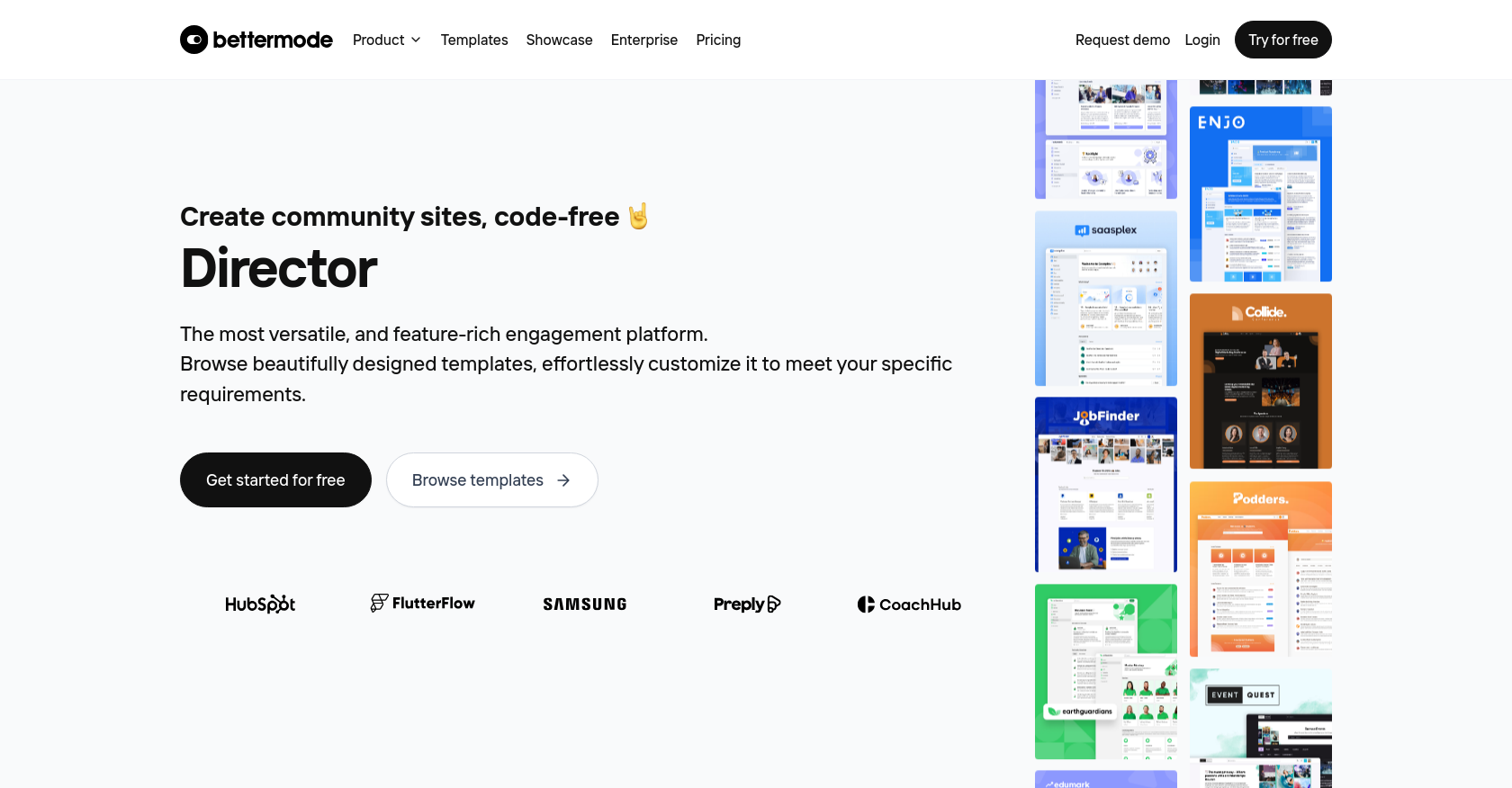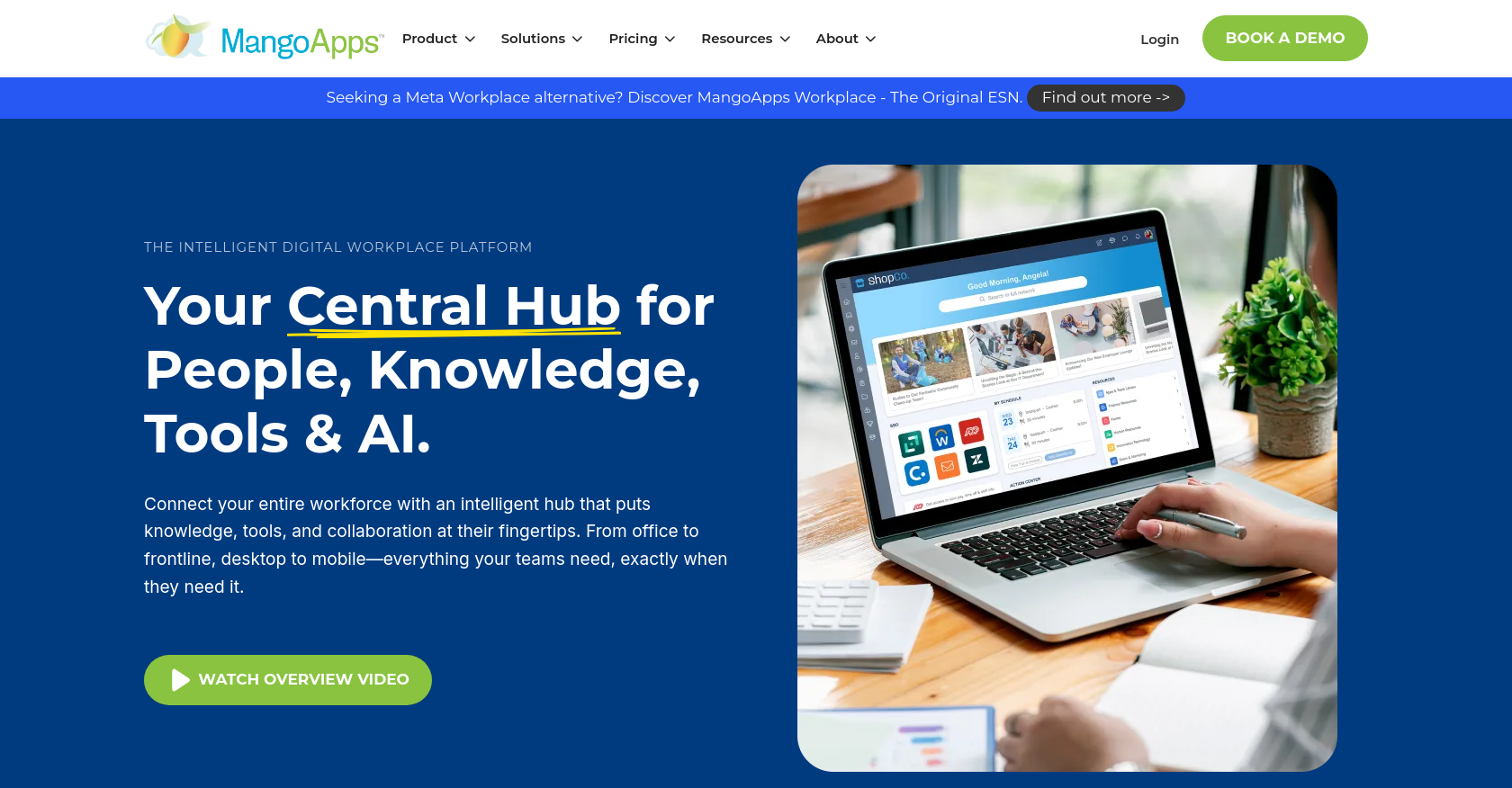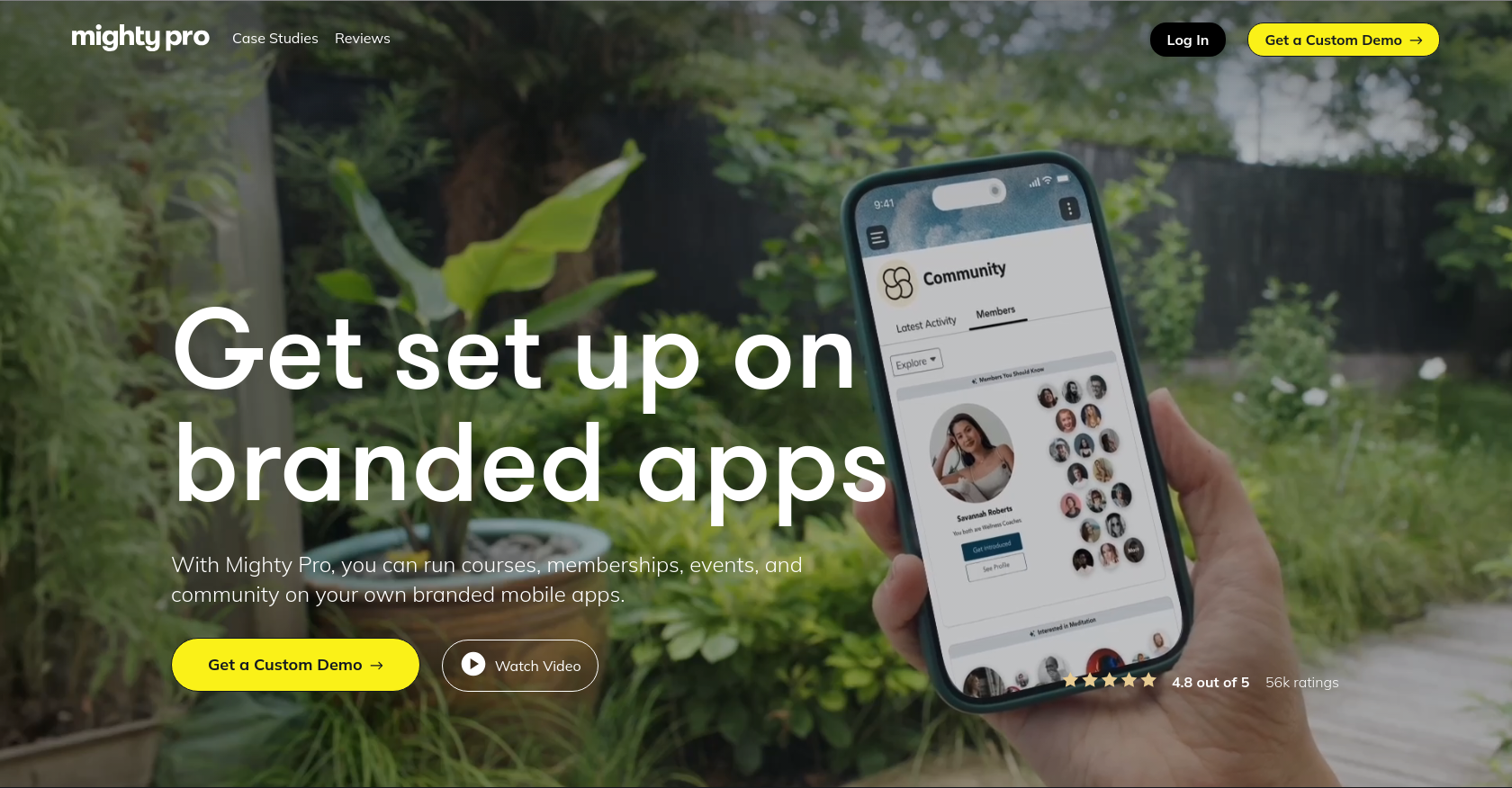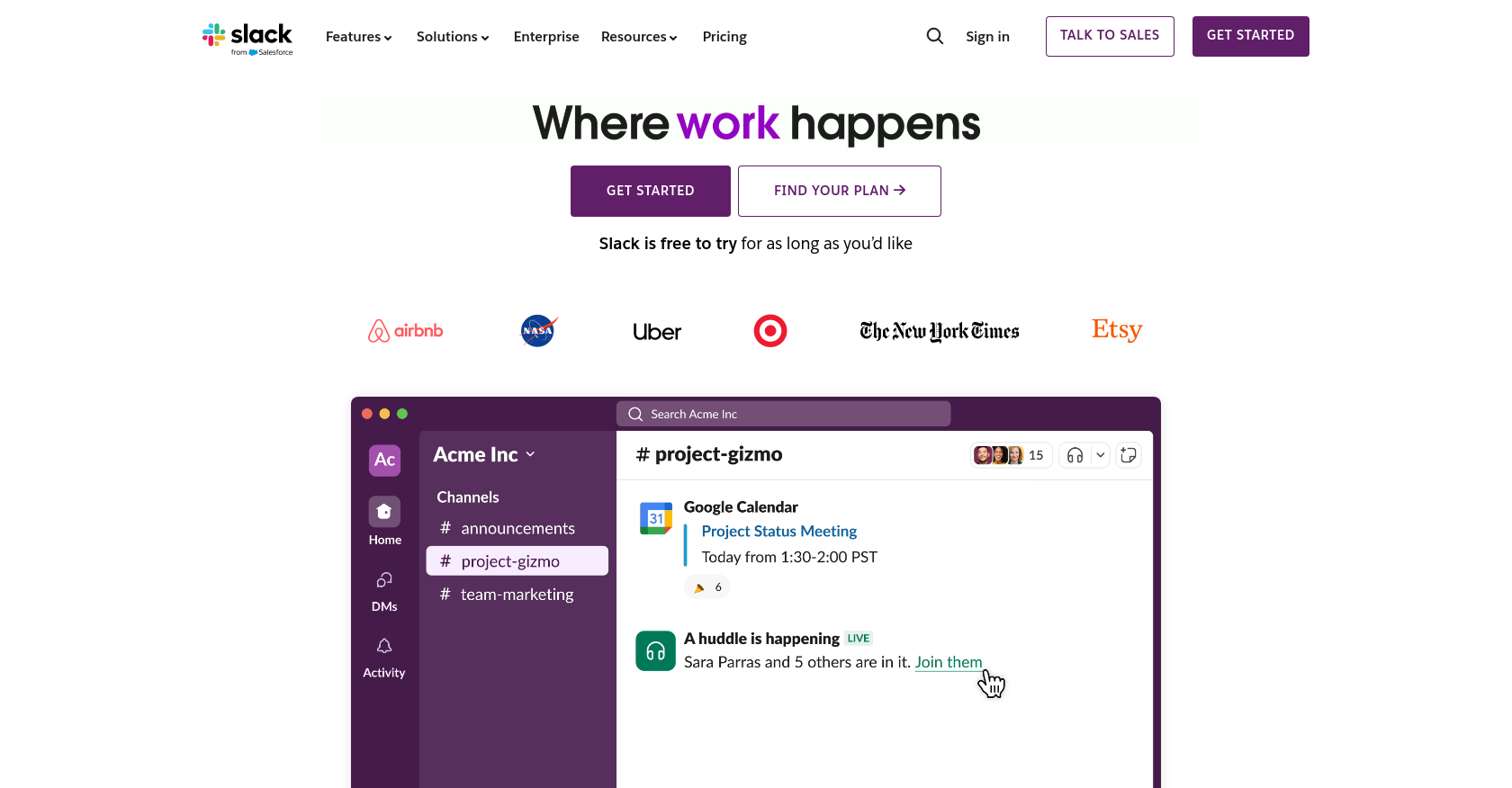Top 7 Threado Alternatives for Learning Businesses in 2025
Understanding Threado’s Position
Threado is well-suited for simplifying community management. Its suite of tools helps customer-facing teams engage and communicate effectively, offering features like centralized dashboards and automation to streamline operations.
At the same time, Threado may not meet the needs of organizations seeking to create adaptive learning experiences. While its AI is useful for handling operational tasks, it doesn’t go far enough in delivering personalized learning or deeper insights for designing educational programs tailored to individual needs.
Where Threado May Not Fit All Needs
Threado is a strong option for community engagement, but when it comes to learning businesses, its focus can feel a little off-center. For organizations that depend on advanced LMS features—like adaptive learning paths or AI-driven content personalization—it may not offer the depth needed to design truly transformative learning experiences. Threado shines in automation and engagement, but its tools are primarily tailored to managing communities, not cultivating learning ecosystems.
Another challenge lies in its reliance on external integrations to expand functionality. While connecting to tools like Slack or Microsoft Teams can be helpful, it often creates a fragmented experience for learning operators. For teams seeking a cohesive, learning-first platform that combines community, AI, and education seamlessly, this approach may feel like a workaround rather than a solution.
Key Insights for Choosing a Threado Alternative
When exploring alternatives to Threado, it's essential to identify platforms that excel in AI-driven solutions, community engagement, and learning capabilities. Here's how Threado compares and what you should prioritize when evaluating other tools.
| Threado Advantages | Threado Limitations | Features To Look For When Considering Threado Alternatives |
|---|---|---|
| Provides centralized dashboards for community management. | Lacks advanced AI for personalized learning experiences. | AI-powered personalization and adaptive learning paths. |
| Automates workflows to simplify operational tasks. | Relies heavily on external integrations, causing fragmentation. | Unified platforms combining community and learning tools. |
| Offers detailed analytics to track community performance. | Limited focus on designing comprehensive learning ecosystems. | Comprehensive LMS features for learning businesses. |
| Supports integrations with tools like Slack and Teams. | Initial setup can be time-consuming for larger teams. | Seamless onboarding and user-friendly interfaces. |
1. Disco

Disco is reshaping how learning programs are created and run. With its AI-first approach, it transforms what could be time-consuming and manual into a streamlined, intuitive process. By combining AI-powered tools with built-in social learning features, Disco makes it easier to design impactful programs that foster collaboration and engagement. Whether you’re launching a cohort-based course or managing a virtual academy, Disco adapts to meet your needs while simplifying both program design and daily operations.
Key Features
- AI-powered content structuring and learner support: Use AI to craft lessons, assessments, and feedback tailored to your learning objectives.
- Automated workflows that reduce administrative burdens: Automate repetitive tasks, letting you focus on delivering meaningful learning experiences.
- Modern, intuitive design for easy learner navigation: Ensure learners stay engaged with an interface that feels seamless and user-friendly.
- Community-driven engagement that enriches every course: Facilitate connections and conversations that deepen the learning experience.
2. Circle

Circle is a platform designed to help organizations create vibrant online communities. It’s simple, approachable, and offers a centralized place for members to connect, share ideas, and participate in discussions. With tools for hosting events, managing content, and even running basic courses, Circle serves as a practical community-building solution.
While Circle does a good job supporting engagement through its user-friendly interface, it isn’t focused on the kind of dynamic, AI-driven learning experiences that adapt and grow with learners. Its features are geared more toward fostering connections rather than transforming knowledge into actionable, personalized learning journeys.
Key Features
- User-friendly interface for community creation: Set up forums, events, and spaces for interaction with ease.
- Basic course management with live streaming options: Enable light educational interactions alongside community discussions.
- Paid memberships to monetize events or programs: Offer gated access and subscription options to generate revenue.
- Integrations with external tools for expanded functionality: Enhance workflows by connecting to platforms like Zapier or Teachable.
3. Bettermode

Bettermode stands out as a platform designed to give organizations complete control over their community experience. Whether you’re building a branded forum or fostering interactive discussions, the platform’s flexibility ensures your community aligns perfectly with your vision. Its modular structure and intuitive tools mean you can create spaces that feel tailored, not templated, keeping your audience engaged and your brand front and center.
Key Features
- Seamless branding: A fully white-label setup allows you to create a community that feels like a natural extension of your organization.
- Customizable spaces: Organize discussions and resources into modular areas, making content easy to navigate and aligned with your goals.
- Effortless moderation: Built-in automation tools help manage and scale large communities without missing a beat.
- Integration-ready: Connect with CRM or marketing tools to streamline workflows and enhance engagement strategies.
4. MangoApps

MangoApps makes workplace collaboration seamless by blending communication tools, document sharing, and social engagement features into one platform. Designed with flexibility in mind, it’s a modular system that adapts to an organization’s unique needs—whether for internal operations or building connected learning communities. MangoApps stands out as a tool that bridges the gap between everyday workflows and meaningful learning opportunities, all under one roof.
Key Features
- Unified dashboard for communication and file sharing: Centralize updates, resources, and tools, ensuring teams stay aligned without switching platforms.
- Separate work “spaces” for diverse training topics: Create dedicated environments for focused learning, whether by department, role, or initiative.
- Configurable modules, appealing to enterprise contexts: Tailor the platform to reflect your organization’s goals, branding, and structure.
- Basic gamification options for participant engagement: Introduce an extra layer of motivation with badges, rewards, and friendly competition.
5. Hivebrite
Hivebrite stands out as a platform built to empower professional networks and membership-based organizations. It’s purpose-designed to help associations, alumni groups, and similar communities foster meaningful connections while streamlining operations. Hivebrite’s toolkit makes it possible to create fully branded, centralized hubs where members can engage, collaborate, and access resources with ease. Whether you're managing events, designing tiered access, or tracking participation, Hivebrite offers a straightforward solution to keep your community thriving.
Key Features
- Member directories and event planning: Simplify networking and event logistics with tools that keep everything in one place.
- Custom access levels: Offer exclusive or tiered content with flexible user permissions tailored to your community structure.
- Participation tracking: Use engagement reporting to understand how members are interacting and where to improve.
- Flexible branding options: Fully customize the platform to reflect your organization’s identity, ensuring a seamless experience for your members.
6. Mighty Pro

Mighty Pro stands out by providing organizations with their very own custom-branded mobile apps, making it a strong option for those managing large-scale learning communities. Its mobile-first approach ensures that learners and members can engage with your programs seamlessly, right from their devices. For organizations looking to create a unified and tailored experience, Mighty Pro offers the tools to bring your brand front and center while fostering meaningful connections.
Key Features
- White-label mobile apps that reflect your brand: Build a mobile experience that feels uniquely yours without sacrificing functionality.
- Membership-driven community with real-time interactions: Enable learners and members to connect through live chats, events, and live streaming, all in one place.
- Simple monetization features for paid content: Charge for courses, memberships, or events with flexible options that fit your goals.
- Expert support from Mighty Networks’ team: Gain access to professional guidance for designing and launching your branded platform.
7. Slack

Slack has established itself as a cornerstone for team communication, offering an intuitive way to organize conversations and collaborate in real time. Known for its user-friendly channels and integrations, Slack simplifies how teams connect, whether they’re brainstorming in a huddle or sharing project updates. While its design is ideal for corporate communication, it’s not specifically built to address the nuanced needs of learning design or program personalization, leaving room for platforms that prioritize learning-first workflows.
Key Features
- Effortless channel creation: Quickly spin up spaces for cohorts, projects, or focused discussions.
- Integration flexibility: Connect with tools like Google Drive, Zoom, or gamification apps to enhance collaboration.
- Familiar interface: A consistent and approachable layout that teams across industries appreciate.
- Limited learning-specific capabilities: Designed for communication rather than structured learning programs or adaptive AI-driven insights.
Making the Right Choice
Choosing the right platform for your learning business isn’t just about ticking boxes—it’s about finding a solution that aligns with your goals, engages your learners, and scales effortlessly with your ambitions. As you evaluate options, look for platforms that combine robust AI capabilities, community-building features, and tools that create meaningful interactions.
Disco’s unique combination of AI-first design and community-driven learning makes it a compelling choice for organizations ready to elevate their programs. If you’re curious to see how it could work for you, start your free trial to explore its tools, or book a demo now to take a closer look at what’s possible.
















